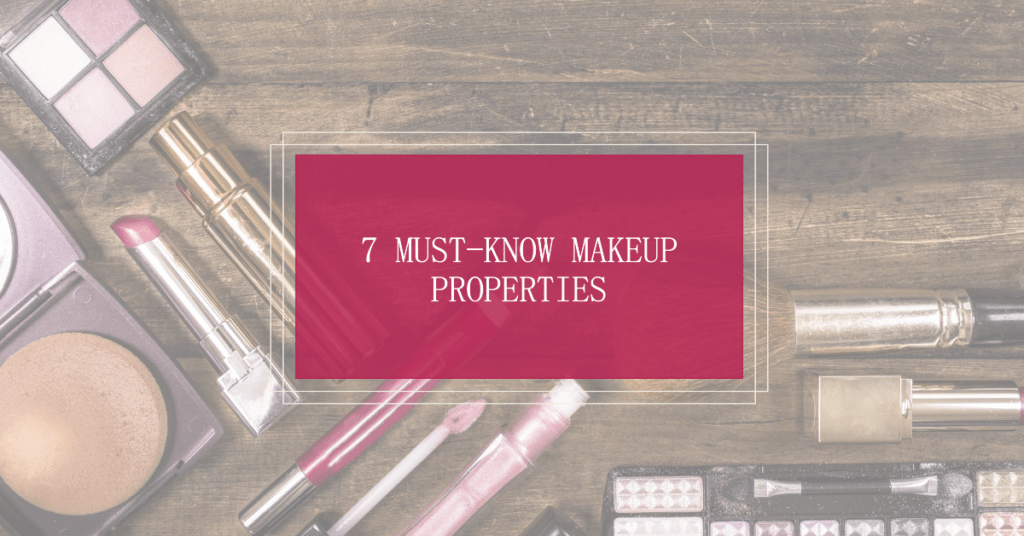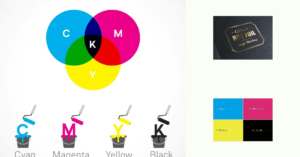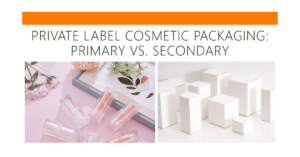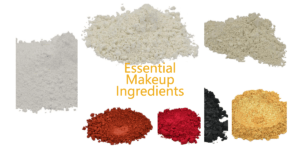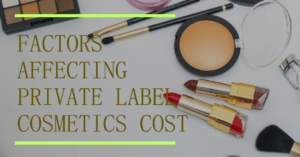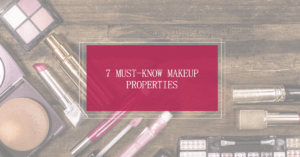Introduction The Different Makeup Properties
Let’s be real – when we swipe on that favorite lipstick or pat on some foundation, most of us aren’t thinking about the nitty-gritty details of what makes our make-up perform. But if you’re a brand looking to make a splash in the beauty world, understanding the different properties of make-up is essential. Think of it as the secret sauce that makes your products stand out in a crowded market. And as a beauty brand owner, it’s your job to know these properties inside and out to help your clients succeed.
So, why should you care? Because nailing these Makeup properties can mean the difference between your brand becoming the next big thing or just another name on the shelf. Let’s dive into what makes make-up, well, make-up.
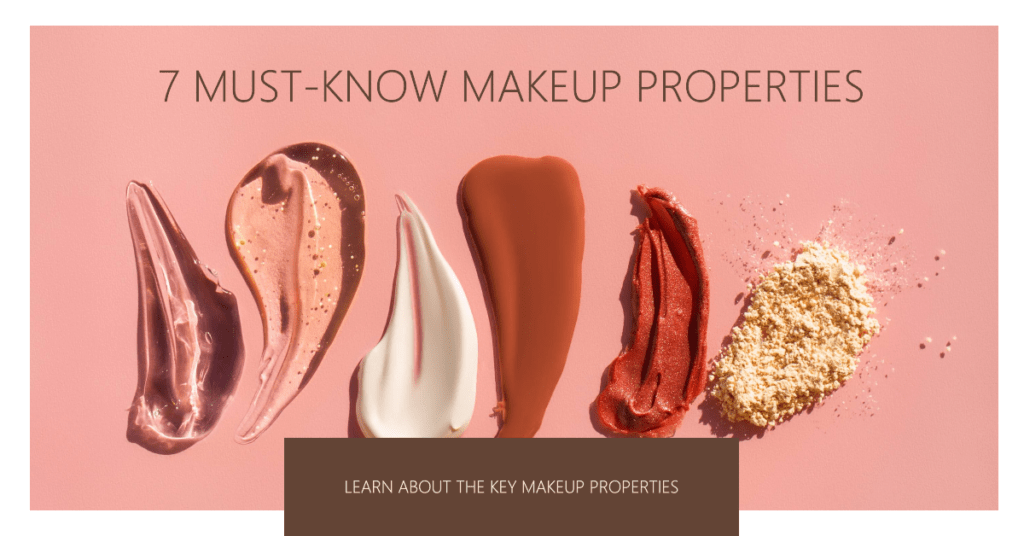
Table of Contents
Understanding the Basics of Makeup Properties
Before we get into the juicy details, let’s talk about what we mean by “makeup properties.” Simply put, these are the characteristics that define how a product looks, feels, and performs. They’re the backbone of any cosmetic formula, affecting everything from how easy it is to apply, to how long it lasts, to how it makes the wearer feel.
The Science Behind Make-Up – What’s Really in Your Products?
Imagine this: your favorite foundation isn’t just a random mix of ingredients thrown together. It’s a carefully balanced blend of pigments, binders, emollients, and more, each with a specific role to play. Understanding the science behind these ingredients can help you create products that not only meet but exceed your client’s expectations.
Why These Makeup Properties Matter for Your Brand’s Success
In the beauty industry, details matter. The right mix of properties can elevate a brand from basic to beloved. Whether it’s the perfect shade of red that makes a lipstick iconic or the creamy texture of an eyeshadow that’s a dream to blend, these small things make a big difference. As a brand owner, your expertise in tweaking these properties can make your products unforgettable.
Quick Fun Fact – The Origins of Some Common Make-Up Ingredients
Did you know that ancient Egyptians used kohl, a mixture of soot and other minerals, to darken their eyes? Or that the first red lipstick was made from crushed bugs? We’ve come a long way since then, but these historical tidbits remind us of the long-standing human obsession with make-up. Now, let’s talk about the properties that make today’s products so much better.
Key Makeup Properties to Consider
Alright, let’s get down to the nitty-gritty. Here are the key properties you should consider when developing make-up products. Each one plays a crucial role in the overall quality and appeal of your client’s offerings.
The Key Makeup Properties: Pigmentation – Harnessing the Power of Color
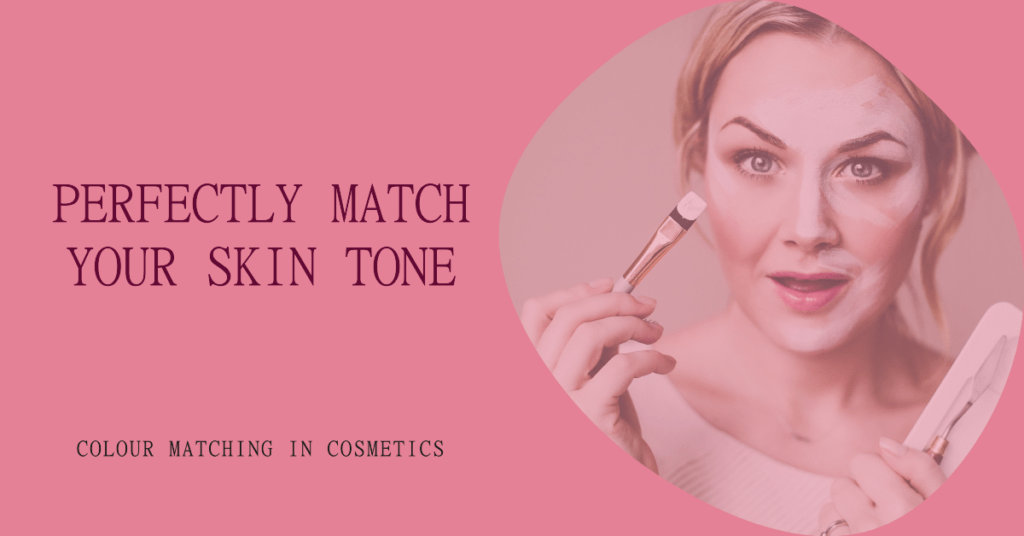
Pigmentation is all about the color intensity of a product. Whether you want a sheer wash of color or a bold statement, pigmentation makes all the difference.
- High Pigmentation: These products deliver intense color in just one swipe. Perfect for bold eyeshadows or lipsticks when you want to make an impact. I’m a huge fan of highly pigmented products for special occasions—nothing beats a bold red lip!
- Low Pigmentation: Great for more subtle looks, or when you want to build up color gradually. This is ideal for beginners or for those who prefer a more natural look.
Whether you’re team sheer or team bold, there’s something incredibly satisfying about finding the right pigmentation. It’s like discovering the perfect balance between too much and not enough.
Sheer vs. Bold: Finding Your Sweet Spot
There’s no right or wrong when it comes to sheer vs. bold—it’s all about what makes you feel confident.
- Sheer: Perfect for a natural, barely-there look. I love sheer products for daytime or when I’m in a rush and just need a quick, fresh look.
- Bold: When you want to stand out, go bold! Whether it’s a vibrant lipstick or a dramatic eyeshadow, bold pigments are all about making a statement.
How Pigmentation Affects Product Quality
Have you ever tried a lipstick that looked amazing in the tube but barely showed up on your lips? That’s a pigmentation problem. High-quality pigmentation ensures that what you see is what you get, whether it’s a sheer gloss or a full-coverage foundation.
The Importance of Consistency in Pigments
Consistency is key. You want each batch of product to deliver the same level of pigmentation, so your client’s customers aren’t disappointed. This means carefully sourcing and testing pigments to make sure they meet your high standards.
The Key Makeup Properties: Texture – The Feel-Good Factor
Now, let’s talk texture. This is all about how the product feels and applies—think creams, powders, liquids, and gels.
- Creams: Cream products are usually thicker and offer a hydrating, buildable coverage. They’re fantastic for dry skin but can be a bit tricky if you’re on the oily side.
- Powders: Powders are lightweight and great for setting makeup or adding a bit of extra coverage. If you have oily skin, you’ll love how they help keep shine at bay.
- Liquids: Liquid foundations are the most versatile. They can range from sheer to full coverage and are usually easy to blend, making them a staple in most makeup bags.
- Gels: Gels are typically used in products like brow tints or blushes. They’re lightweight and give a natural, skin-like finish. I love using a gel blush for that “just pinched” look.
I’ve had my fair share of texture mishaps—like the time I tried to apply a cream blush with a powder brush (pro tip: don’t). But once you find the right texture, it’s a game-changer.
How Texture Influences User Experience
Texture can make or break a product. A foundation that glides on smoothly and blends effortlessly is going to be a hit. But if it feels heavy or sticky, it’s likely to end up in the back of the drawer. A great texture ensures a pleasant application experience, which keeps customers coming back for more.
What to Watch Out for When Formulating Textures
Getting the texture right involves balancing oils, waxes, and other ingredients. Too much of one thing, and your product might be too greasy or too dry. It’s a delicate dance, but when done right, the results are magic.
The Key Makeup Properties: Longevity – Because No One Likes a Midday Make-Up Meltdown
Ever had a moment where you catch a glimpse of yourself in the mirror halfway through the day and wonder where your makeup went? Yeah, me too. That’s where longevity comes in.
- Long-Wear Formulas: These are designed to stay put for hours, resisting sweat, oil, and even tears (we’ve all been there). They’re perfect for busy days when you don’t have time for touch-ups.
- Regular Formulas: These are great for shorter periods or when you’re okay with reapplying. They might not last through a marathon, but they’re usually more comfortable for everyday wear.
A quick trick to extend the wear of any makeup? Set it with a good powder or setting spray. I once survived a humid summer wedding with my makeup intact thanks to a solid setting spray—highly recommend!
Water Resistance: No More Makeup Meltdowns
If you’ve ever been caught in the rain or had a particularly sweaty workout session, you know the importance of water-resistant makeup. It’s your insurance against the elements.
- Why It Matters: Water-resistant makeup is designed to hold up against moisture, meaning less smudging, running, or disappearing altogether.
- When to Use It: Anytime you expect to get wet—be it from weather, sweat, or tears of joy (or frustration). I learned this the hard way during a particularly rainy day at the beach.
Water-resistant isn’t the same as waterproof, though! Waterproof products are even more robust, often requiring a heavy-duty makeup remover to get them off.
Balancing Long-Wear with Comfort
Long-wear formulas are great, but they shouldn’t come at the cost of comfort. No one wants to feel like they’re wearing a mask. The challenge is to create products that last all day while still feeling light and breathable.
The Role of Fixatives in Make-Up Durability
Fixatives are the unsung heroes of long-lasting make-up. These ingredients help lock everything in place, so that perfect winged eyeliner doesn’t budge. But use too much, and you could end up with a product that feels stiff or heavy. It’s all about finding the right balance.
The Key Makeup Properties: Finish – Matte, Dewy, or Somewhere In-Between?
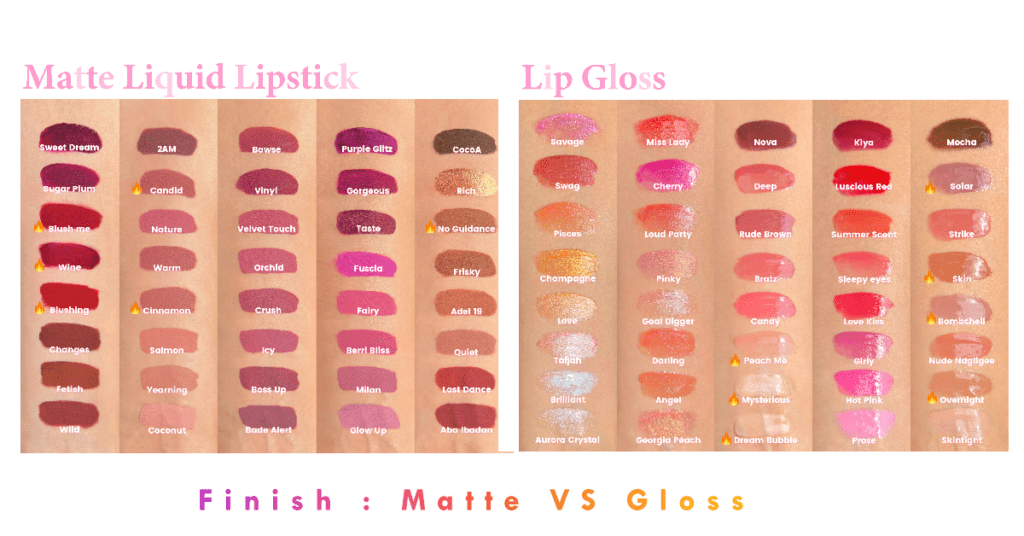
The finish is the final touch that can change the entire look of a product. Whether it’s a matte lipstick or a dewy foundation, the finish helps set the tone for the overall aesthetic.
- Matte Finish: This one’s for the folks who want zero shine and a smooth, even texture. Matte is great if you’ve got oily skin or if you’re in for a long day and don’t want to worry about touch-ups. It’s my go-to for a night out when I need my makeup to stay put through dinner and dancing.
- Dewy Finish: On the other hand, if you’re all about that lit-from-within glow, dewy is your best friend. It gives your skin a hydrated, radiant look—perfect for those days when you want to fake a healthy, hydrated complexion (even if you’re running on four hours of sleep). Just be careful not to cross into “shiny” territory. A light hand is key here!
And then there are satin and natural finishes, which are like the perfect middle ground—not too matte, not too dewy. They’re ideal if you want something versatile that works for both day and night.
How Finish Impacts the Overall Look
A matte finish gives a sophisticated, polished look, while a glossy finish can make lips look fuller and more youthful. It’s about knowing what your client’s target audience wants and delivering that in every product.
Customizing Finishes to Fit Market Trends
Trends in the beauty industry change faster than you can say “contouring.” What’s hot right now might be out tomorrow. Staying on top of trends and offering customizable finishes can give your clients an edge in a competitive market.
The Key Makeup Properties: Ingredients – The Backbone of Every Product
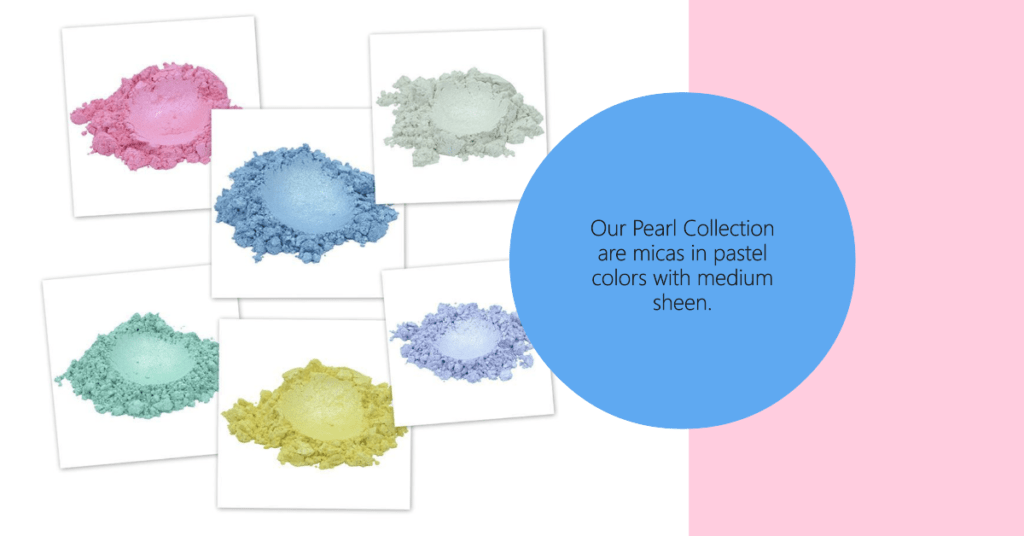
If properties are the backbone, ingredients are the building blocks. The quality, type, and source of your ingredients can make a huge difference in the final product.
Ingredients: What’s Inside Counts
The ingredients in your makeup don’t just affect how it performs—they also impact your skin’s health.
- Good Ingredients: Look for things like hyaluronic acid for hydration, antioxidants for protection, and non-comedogenic ingredients if you’re prone to breakouts.
- Bad Ingredients: Avoid harsh chemicals like parabens, sulfates, and synthetic fragrances, especially if you have sensitive skin.
My skin has definitely thanked me since I started paying more attention to ingredients. Trust me, it’s worth taking the extra time to read the lab
Natural vs. Synthetic – The Ongoing Debate
There’s a lot of buzz about natural ingredients, but synthetic ones have their place too. Natural ingredients are often seen as safer and more sustainable, but they can be harder to work with. On the other hand, synthetics can offer more consistent results but might not align with every brand’s ethos. It’s about finding the right balance for your client’s brand. learn more on Natural vs. Synthetic – The Ongoing Debate here.
Trending Ingredients You Should Know About
From hyaluronic acid to bakuchiol, certain ingredients are having their moment in the spotlight. Knowing which ingredients are trending can help you develop products that resonate with today’s beauty consumers.
The Key Makeup Properties: Coverage- Your Skin’s New Best Friend

Coverage is like that magic cloak for your skin. Whether you’re aiming for a barely-there look or full-on glam, coverage level plays a huge role.
- Full Coverage: Think of it as a superhero cape for your face—hiding everything from blemishes to bad decisions (hello, acne scars). This is what you grab when you want to look flawless in photos or need your makeup to last through a long day.
- Light Coverage: On the flip side, light coverage is more like a soft veil—just enough to even out your skin tone without covering every freckle. It’s perfect for those “no-makeup” makeup days.
Personally, I bounce between both depending on my mood. Some days, I want to feel like a porcelain doll, and other days, I’m all about that fresh-faced, “just me, but better” vibe.
The Key Makeup Properties: Skin Compatibility-Not All Makeup Is Created Equal
Here’s the thing—your skin type plays a huge role in how makeup looks and feels. What works for your best friend’s dry skin might be a disaster on your oily complexion.
- Dry Skin: Look for hydrating, creamy formulas that won’t cling to dry patches. Dewy finishes and liquid textures are usually a safe bet.
- Oily Skin: Matte finishes and powders are your best friends. These help control shine and keep your makeup from sliding off.
- Combination Skin: You might need to mix and match—like using a matte foundation in your T-zone and a more hydrating one on your cheeks.
- Sensitive Skin: Opt for products with gentle, non-irritating ingredients. Fragrance-free and hypoallergenic options are a good place to start.
I’ve had my fair share of skin-related disasters, like the time I used a foundation that was way too drying for my skin. Lesson learned: always match your makeup to your skin type!
Summarize: Pigmentation, Texture, Longevity, Finish, Ingredients, Coverage, and skin Compatibility are the most common Makeup Properties,
Other Makeup Properties Application: The Art of Putting It All Together
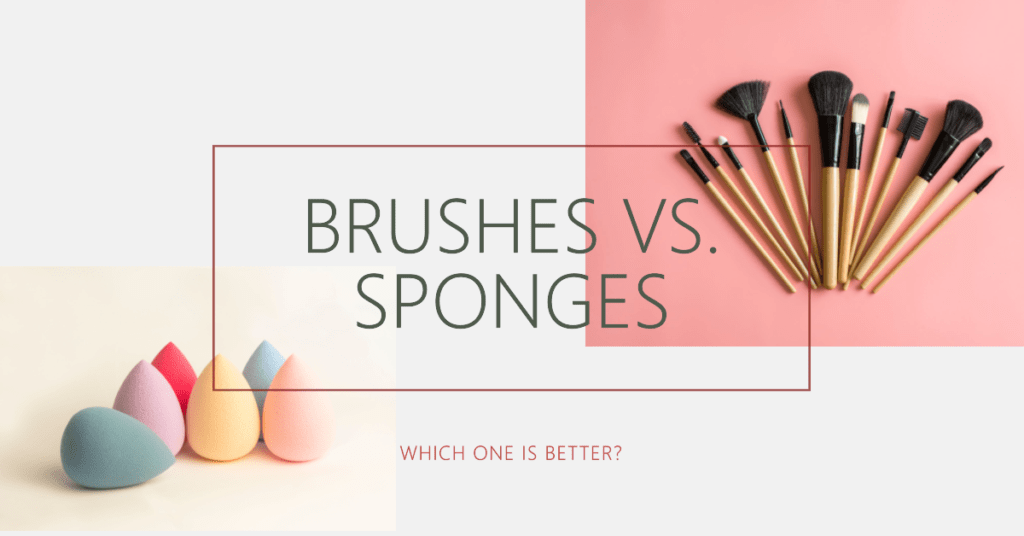
You’ve got the right products, but how you apply them can make or break your look. The right tools and techniques are key.
- Brushes vs. Sponges vs. Fingers: Brushes offer precision, sponges give a flawless blend, and fingers are great for quick, natural application. I’m a big fan of sponges for foundation—they give such a smooth, even finish.
- Application Tips: Always start with less and build up. And don’t forget to blend, blend, blend! There’s nothing worse than visible makeup lines.
The best part of makeup is that it’s all about experimentation. There’s no one-size-fits-all, so play around with different techniques until you find what works for you.
Tailoring Makeup Properties to Your Brand
Every brand is different, and so are its customers. That’s why it’s important to tailor make-up properties to fit the unique identity of each brand you work with.
Identifying Your Brand’s Unique Selling Proposition (USP)
Your client’s USP is what sets their brand apart from the competition. Maybe it’s their commitment to vegan products or their focus on inclusivity. Whatever it is, understanding their USP is key to developing make-up properties that align with their brand.
Aligning Product Properties with Brand Identity
Once you’ve nailed down the USP, it’s time to align the product properties with that identity. For example, a brand focused on sustainability might prioritize natural ingredients and eco-friendly packaging.
Examples of Successful Brands Who Nailed It
Think of brands like Fenty Beauty, which made inclusivity its USP and aligned its product properties accordingly by offering a wide range of shades and skin types. Or Glossier, which focuses on a natural, “no-make-up” make-up look, reflected in their product’s sheer, buildable properties.
Challenges in Balancing Make-Up Properties
Creating the perfect make-up product is no easy feat. There are a lot of challenges that come with balancing different properties, but overcoming these challenges is what sets a great manufacturer apart.
Common Formulation Dilemmas
Sometimes, achieving the perfect balance of properties can feel like solving a puzzle. You might find that improving one property, like pigmentation, negatively affects another, like texture. It takes experience and expertise to navigate these dilemmas successfully.
Navigating Regulatory Hurdles
In addition to formulation challenges, there are also regulatory considerations. Different countries have different regulations regarding what ingredients can be used and how products must be labeled. Staying on top of these rules is crucial to avoid costly delays or recalls.
The Importance of Testing and Quality Assurance
Testing is where the rubber meets the road. No matter how good a product looks on paper, it needs to be thoroughly tested to ensure it performs as expected. This includes everything from stability testing to ensure longevity, to safety testing to avoid allergic reactions.
How Private Label Manufacturers Can Help

If all of this sounds overwhelming, don’t worry – that’s where private label manufacturers come in. With the right partner, your clients can navigate these challenges with ease.
Expertise in Custom Formulations
Private label manufacturers bring a wealth of expertise in custom formulations. They know how to balance different properties to create products that meet specific brand needs. Whether it’s achieving the perfect shade of red or developing a foundation with the ideal texture, they’ve got the know-how to make it happen.
Access to High-Quality Ingredients
Another advantage of working with a private label manufacturer is access to high-quality ingredients. They often have established relationships with suppliers, allowing them to source the best materials at competitive prices.
Flexibility in Production and Scaling
Finally, private label manufacturers offer flexibility in production and scaling. Whether your client is just starting out with a small batch or needs to ramp up production quickly, they can accommodate those needs.
The Future of Make-Up Properties
The beauty industry is constantly evolving, and staying ahead of the curve is key to long-term success. So, what does the future hold for make-up properties?
The Shift Toward Sustainable and Clean Beauty
There’s a growing demand for products that are not only effective but also environmentally friendly and free from harmful chemicals. This shift toward sustainable and clean beauty is driving innovation in make-up properties, from biodegradable packaging to clean formulations.
Emerging Trends in Make-Up Formulation
Beyond sustainability, there are other exciting trends on the horizon. Hybrid products that combine skincare benefits with make-up, customizable formulas that allow consumers to create their perfect product, and AI-driven tools that help brands understand customer preferences are just a few examples.
Innovations to Watch in the Next Decade
Looking ahead, we can expect even more innovation in the way make-up properties are developed and delivered. Think personalized beauty products created through 3D printing, or smart make-up that adapts to changes in your skin throughout the day. The possibilities are endless, and private label manufacturers will play a key role in bringing these innovations to life.
Conclusion
Understanding the different properties of makeup is like having a secret weapon in your beauty arsenal. It helps you choose the right products, apply them like a pro, and avoid those pesky makeup mishaps. Whether you’re all about that dewy glow or a matte finish, there’s a whole world of makeup waiting to be explored.
At MetaCNBeauty Private Label Cosmetics Manufacturer, we’re all about helping you find that perfect match. With our wide range of customizable products, you can create a makeup line that’s tailored to your unique needs and preferences. So go ahead, experiment, and discover what makes you feel fabulous!
FAQ
What’s the difference between matte and dewy finishes?
Matte finishes give a shine-free, smooth look, perfect for oily skin or long-lasting wear. Dewy finishes offer a glowing, hydrated appearance, ideal for dry or dull skin.
How can I make my makeup last longer?
Use a good primer, opt for long-wear formulas, and set your makeup with powder or a setting spray to extend its longevity.
Which makeup texture is best for oily skin?
Powders and matte-finish products are usually best for oily skin, as they help control shine and stay put longer.
Are water-resistant and waterproof the same thing?
No, water-resistant makeup can withstand some moisture, while waterproof makeup is designed to stay put even in heavy water exposure.
How do I choose the right shade of foundation?
Match the foundation to your skin’s undertone (cool, warm, neutral) and always test it on your jawline to ensure it blends seamlessly with your neck and face.
What makes pigmentation so important in make-up?
Pigmentation is key because it affects how vivid and true-to-color a product appears on the skin. High-quality pigmentation ensures that the product delivers the color and coverage that customers expect.
How can texture affect the overall user experience?
Texture influences how a product feels during application and throughout the day. A good texture ensures a smooth, pleasant application, making it more likely that customers will enjoy using the product and repurchase it.
Are natural ingredients always better than synthetic ones?
Not necessarily. While natural ingredients are often perceived as safer, synthetic ingredients can offer consistency and stability that natural ones might lack. The best choice depends on the product and the brand’s values.
How do private label manufacturers ensure product consistency?
Manufacturers ensure consistency through rigorous testing, quality control processes, and by carefully sourcing and standardizing ingredients to ensure each batch meets the same high standards.
What trends should we watch out for in the future of make-up?
Key trends include the shift towards sustainable and clean beauty, the rise of hybrid skincare-makeup products, and innovations like AI-driven personalization and smart makeup technologies.
